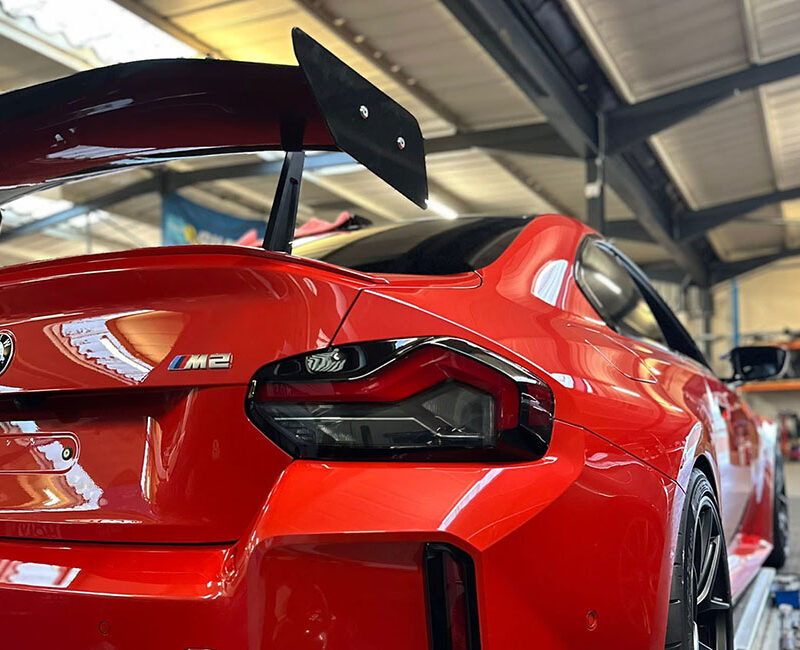Aerodynamics in Track Cars: From Theory to Practice
Aerodynamics plays a pivotal role in the performance of a track car. It’s not just about making the car faster in a straight line; it’s about stability, grip, and control at high speeds. This comprehensive article explores the theory behind aerodynamics in track cars and how these principles are applied in practice to enhance track day performance.
Understanding the Basics of Aerodynamics
At its core, aerodynamics in motorsport is about managing air flow around the vehicle to reduce drag and increase downforce. Drag is the resistance a car faces moving forward, while downforce is the vertical force exerted downwards, increasing the car’s grip on the track.
Key Aerodynamic Components in Track Cars
- Front Splitters and Rear Diffusers: These components help manage airflow under the car, reducing lift and increasing downforce. The splitter extends from the bottom of the front bumper and helps ‘split’ the air, while the diffuser at the rear accelerates air under the car, reducing pressure and increasing grip.
- Rear Wings and Spoilers: These add significant downforce at the rear of the car. The design and angle of a rear wing can be adjusted to balance downforce and drag, depending on the track layout.
- Side Skirts: Side skirts help in controlling airflow along the sides of the car, reducing turbulence and drag.
- Vortex Generators: Often seen on the roof just before the rear window, these small additions help to manage airflow and reduce drag.
- Undertray and Flat Floors: A flat undertray helps in creating a smooth airflow under the car, enhancing the efficiency of other aerodynamic components.
The Impact of Aerodynamics on Performance
- Increased Grip: Downforce allows for higher cornering speeds by increasing tire traction.
- Improved Stability: Well-managed airflow contributes to the car’s stability, especially at high speeds.
- Balanced Handling: Aerodynamics can be used to adjust the handling characteristics of a car, influencing understeer and oversteer.
Balancing Aerodynamics with Other Factors
- Weight: Aerodynamic additions can add weight, which might affect performance. It’s essential to strike a balance between added downforce and increased weight.
- Power vs. Aerodynamic Drag: More downforce usually means more drag, which can reduce top speed. The key is to find an optimal balance for the specific track and driving style.
Practical Considerations
- Testing and Tuning: Aerodynamic components often require testing and tuning for optimal performance. This might involve adjusting the angle of wings or the position of splitters.
- Regulations and Restrictions: Be aware of any aerodynamic restrictions imposed by track day rules or racing series regulations.
- Cost vs. Benefit: Assess whether the performance gains justify the cost of aerodynamic upgrades.
DIY vs. Professional Solutions
- DIY Aerodynamic Mods: Simple modifications like adding a rear wing or splitter can be done DIY, but require some knowledge of aerodynamics to be effective.
- Professional Aerodynamic Packages: For serious racers, professional aerodynamic packages offer the best performance but at a higher cost.
FAQs on Aerodynamics in Track Cars
Q: How important are aerodynamics in lower-powered track cars? A: While aerodynamics plays a more significant role in high-powered cars, even lower-powered vehicles can benefit from improved stability and grip through aerodynamic upgrades.
Q: Can aerodynamic upgrades improve lap times? A: Yes, by increasing downforce and grip, aerodynamic upgrades can lead to improved cornering speeds and thus better lap times.
Q: Are there any downsides to adding aerodynamic components? A: Besides potential added weight and drag, improperly balanced aerodynamics can negatively affect handling.
Q: How do I know what aerodynamic modifications to make? A: This depends on your car, driving style, and the tracks you frequent. Research, professional advice, and testing are key.
Q: Should I prioritise aerodynamics over other upgrades? A: Aerodynamics is just one aspect of track performance. It should be balanced with engine performance, suspension setup, and braking improvements.
In conclusion, understanding and applying aerodynamics in track cars can significantly enhance performance, particularly in high-speed stability and cornering. Whether you’re a weekend track day enthusiast or a competitive racer, investing time and resources into aerodynamic improvements can yield tangible benefits on the track. As with all aspects of motorsport, finding the right balance is crucial, as is a thorough understanding of how aerodynamics interact with other vehicle systems.

